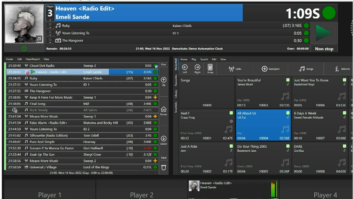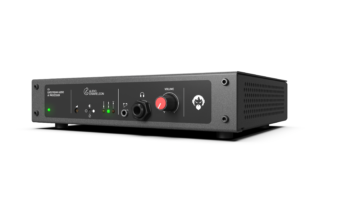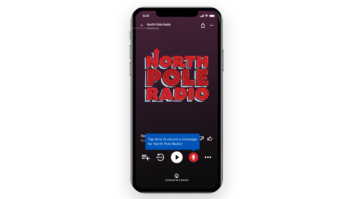Broadcasters’ Content Can Flow to Listeners by Multiple Avenues
From its inception, broadcasting has been about delivering content via wireless means, using a one-way, point-to-multipoint format. In practical terms, and essentially by necessity, broadcasters also established the tradition of generating (or funding the creation of) the content they delivered on these services, as well. This duality of content-plus-service has embodied the core of broadcasters’ product offerings since the business began.
Today, however, this paradigm is changing. Station operators can now leverage paths other than their own RF carriers for getting their content to listeners. Streaming via the Internet is the best example of this to date, of course. Yet even though the same content that is broadcast over the air may also be carried in the online environment, the business of streaming audio is very different than that of broadcast radio – as many have already learned.
The options for these multiple pathways to listeners are about to increase, and broadcasters will want to explore their appropriateness as alternate venues for carriage of their content to audiences.
Along a separate track, a wholly new content-delivery approach generally categorized as “on-demand” is also developing, as we discussed in our previous column. The growth of on-demand delivery does not mean that real-time service will wither and die, however. In fact, the opposite may be true, as new real-time systems emerge with even greater capacity than current broadcast services, and bidirectional cross-promotion of real-time and on-demand services improve broadcasters’ overall business results.
New real-time platforms
Consider the following list of new signal delivery methods now available to broadcasters (besides AM and FM analog transmissions): IBOC-AM, IBOC-FM, Internet radio, satellite radio (two proprietary systems), analog cable audio, digital cable audio, IPTV audio, NTSC SAP, ATSC DTV multicast audio and proprietary online services (such as those offered for specific media-oriented PCs, or radio streams presented by online music stores).
Today most online audio services are delivered to the PC or Mac platform, which is then used either as the terminal listening device, or as a gateway to other peripheral devices. Increasingly, however, when home networks are involved, streaming audio services can be accessed directly by WiFi or Ethernet audio appliances, without the need for a PC/Mac at the listening site.
Next-gen systems will bypass this route entirely and feed streaming audio directly to wireless devices like PDAs and advanced cell phones, via 2.5/3G cellular services and digital broadcast services like DAB or DVB-H (more about these next time.)
Certainly some of these services are not readily available to local broadcasters, but they are accessible to many consumers in any given market, so they must be at least factored into broadcasters’ competitive analyses from a defensive perspective. There is also a life span to each of these systems, with some (like analog cable audio) currently fading away, while others (like IPTV audio) are just emerging.
Note also that audio is not the only service delivered by most of these alternate pipes. Radio broadcasters that avail themselves of any such delivery path should be able to optimize non-audio content (i.e., metadata text, graphics, etc.) to the channel and terminal device(s) involved.
Finally, consider that several of the above systems can provide a broadcaster with multiple simultaneous services, such as IBOC-FM (assuming current directions toward supplemental audio services are maintained and ultimately FCC-approved) and Internet radio (with its virtually infinite capacity for carrying additional audio streams, each at a data rate that can be optimized for the particular content delivered).
FM still rules
As an important aside, however, when examining these new options, it becomes clear that FM radio – and the VHF band in which it operates – is almost optimally suited for wireless audio delivery. Among today’s wireless services, FM has the greatest availability, with direct access to a single transmitter’s output by fixed, mobile and portable devices at a very high and consistent statistical rate of success, over a wide physical area.
No other competitive service extant today (e.g., AM, satellite or Internet radio) can make this claim. Audio fidelity is also reasonably high via this service, and IBOC service will improve this further.
Nevertheless, each of the alternative services provides unique features that FM may not be able to match – not the least of which is simply access to additional audiences. So broadcasters must evaluate these services and decide which might make a good fit for their future.
Source code
Given the expected need to render content in multiple forms, broadcasters need to also develop sensible methods of creating, storing, distributing and otherwise managing their content assets. Ideally, a sort of “über-format” should be used for ultimate storage, which includes all possible content types associated with a given item in a single “container.” These elements can then be parsed, selected and appropriately converted into the particular subsets required by each delivery system.
A current example of the need for such technology is the process now being developed for delivering song-title and artist metadata to both FM analog (via RBDS) and IBOC-FM (via PAD). A special case here is the need to maximize consistency between the main IBOC audio service’s and the analog FM signal’s metadata, so that as much text integrity as possible is preserved when the receiver “blends” from the IBOC to the analog signal in areas of difficult coverage.
This is but one facet of the myriad to be managed in the multi-format future faced by broadcasters. Next time we’ll look at what tomorrow’s converged service offerings might look like, and how radio might play in this space.












